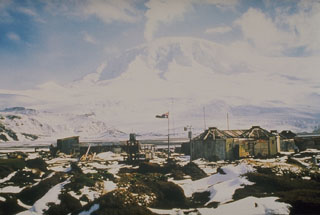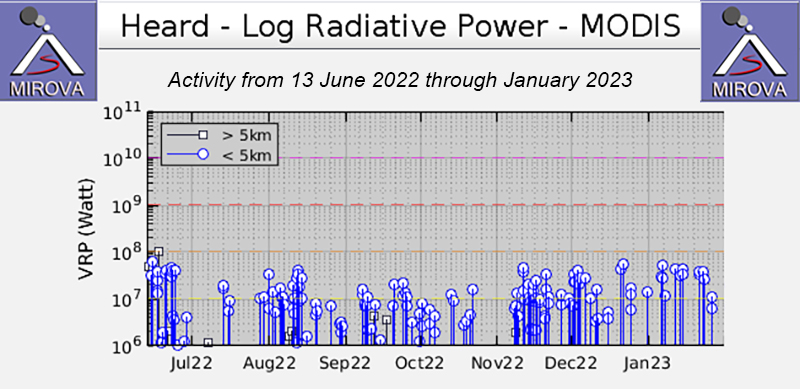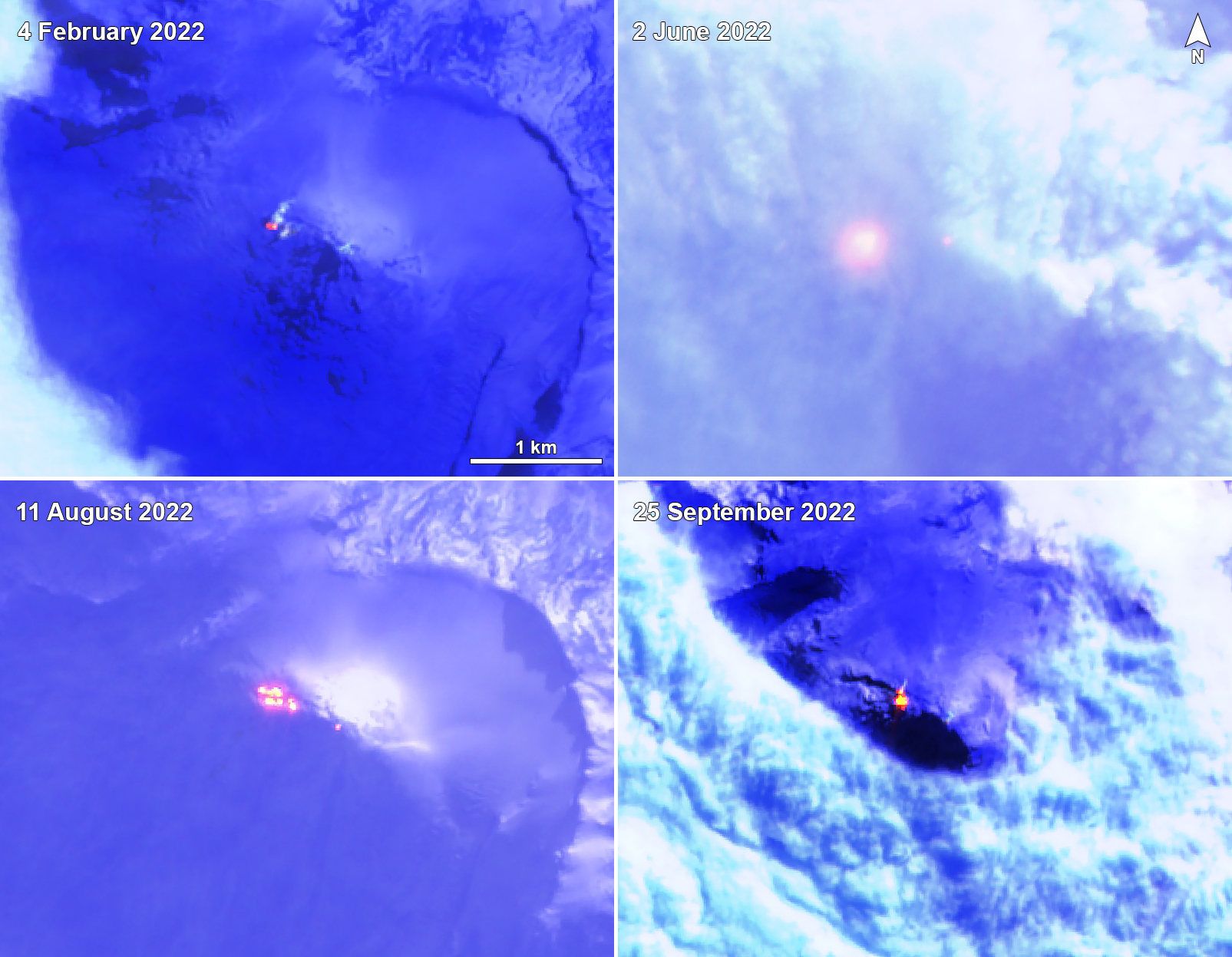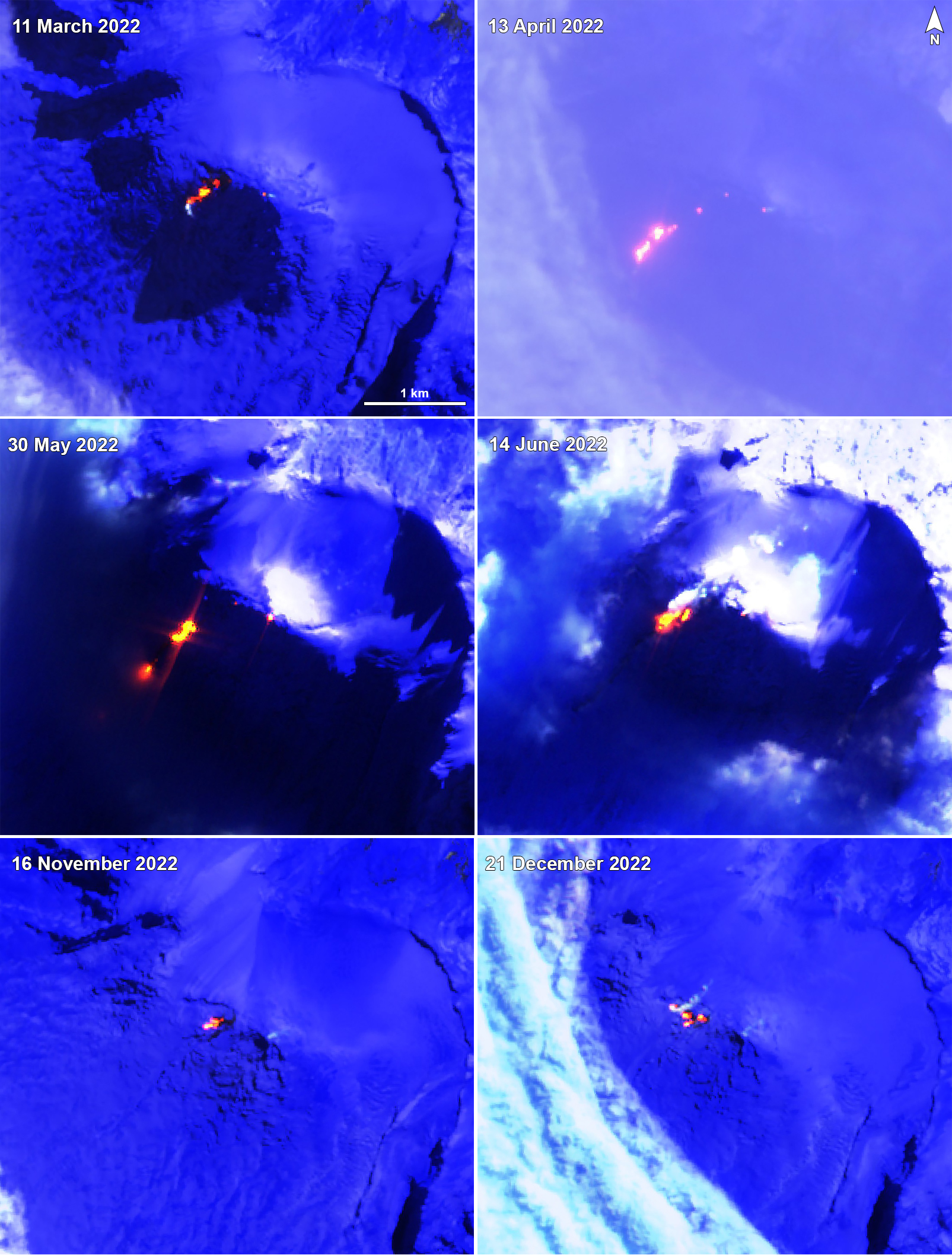Report on Heard (Australia) — February 2023
Bulletin of the Global Volcanism Network, vol. 48, no. 2 (February 2023)
Managing Editor: Benjamin Andrews.
Edited by Kadie L. Bennis.
Heard (Australia) Intermittent lava flows and persistent thermal anomalies during February 2022-January 2023
Please cite this report as:
Global Volcanism Program, 2023. Report on Heard (Australia) (Bennis, K.L., and Andrews, B., eds.). Bulletin of the Global Volcanism Network, 48:2. Smithsonian Institution.
Heard
Australia
53.106°S, 73.513°E; summit elev. 2745 m
All times are local (unless otherwise noted)
Heard is a remote island located in the southern Indian Ocean and consists of two volcanic structures: Big Ben and the smaller Mt. Dixon. The active Mawson Peak is located within a 5-6 km wide caldera breached to the SW side of Big Ben. Intermittent eruptions have occurred since 1910 and the most recent eruption began in September 2012 and has mainly been characterized by consistent thermal activity and lava flows (BGVN 47:02). Similar events are covered in this report during February 2022 through January 2023 primarily using various satellite data.
MIROVA (Middle InfraRed Observation of Volcanic Activity) analysis of MODIS satellite data showed that intermittent low-to-moderate thermal activity occurred during July 2022 through January 2023 (figure 51). Periods of increased thermal activity were recorded during late July through early August, late September through early October, mid-November, and early-to-mid-December. MODIS satellite instruments using the MODVOLC thermal algorithm also detected a total of 34 strong thermal hotspots on 15 March, 1 and 6 April, 29 May, 14, 20, 22, and 23 June, 10 and 12 August, 23 September, 11, 13, 15, and 26 November, 2, 6, and 8 December, and 11, 13, and 23 January 2023. On clear weather days, Sentinel-2 infrared satellite imagery also captured thermal activity at and near the summit of Mawson Peak (figure 52). A persistent thermal anomaly sometimes accompanied by gas-and-steam emissions was captured to the NW of Mawson Peak at a second vent on 4 and 17 February, 3 August, 15, 25 September, 15 October and at Mawson Peak on 4 June.
Stronger thermal anomalies indicative of active lava flows originated from the second NW flank vent and moved W and SW were captured in Sentinel-2 infrared satellite imagery 39 times on 11 and 31 March, 13 April, 3, 10, 13, 15, 18, 20, 25, and 30 May, 2, 12, 14, 17, 22, and 24 June, 2, 9, 17, and 24 July, 1, 6, 11, 13, and 31 August, 20 September, 2, 22, and 25 October, 9, 14, 16, 21, 24, and 26 November, 4 and 21 December, and 23 January; a hotspot was also detected over Mawson Peak, sometimes accompanied by gas-and-steam emissions (figure 53).
Geological Summary. Heard Island on the Kerguelen Plateau in the southern Indian Ocean consists primarily of the emergent portion of two volcanic structures. The large glacier-covered composite basaltic-to-trachytic cone of Big Ben comprises most of the island, and the smaller Mt. Dixon lies at the NW tip of the island across a narrow isthmus. Little is known about the structure of Big Ben because of its extensive ice cover. The active Mawson Peak forms the island's high point and lies within a 5-6 km wide caldera breached to the SW side of Big Ben. Small satellitic scoria cones are mostly located on the northern coast. Several subglacial eruptions have been reported at this isolated volcano, but observations are infrequent and additional activity may have occurred.
Information Contacts: MIROVA (Middle InfraRed Observation of Volcanic Activity), a collaborative project between the Universities of Turin and Florence (Italy) supported by the Centre for Volcanic Risk of the Italian Civil Protection Department (URL: http://www.mirovaweb.it/); Hawai'i Institute of Geophysics and Planetology (HIGP) - MODVOLC Thermal Alerts System, School of Ocean and Earth Science and Technology (SOEST), Univ. of Hawai'i, 2525 Correa Road, Honolulu, HI 96822, USA (URL: http://modis.higp.hawaii.edu/); Sentinel Hub Playground (URL: https://www.sentinel-hub.com/explore/sentinel-playground).




